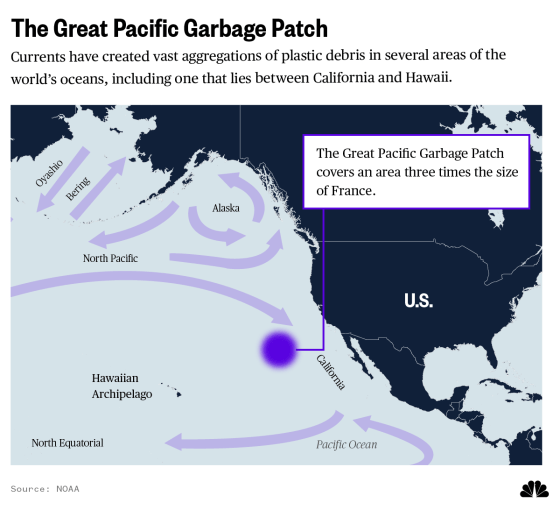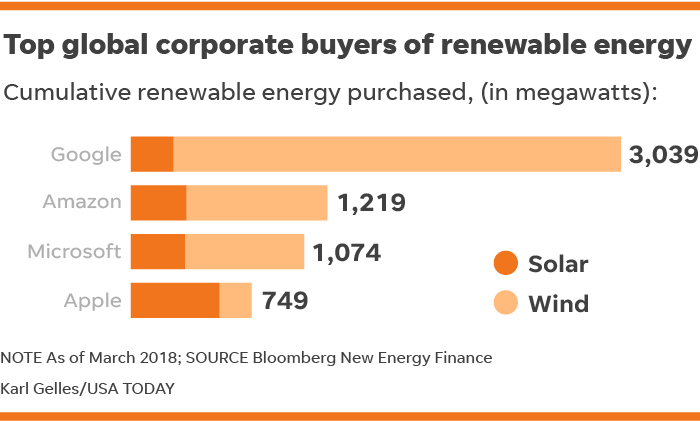Rhiannon12866
Rhiannon12866's JournalSeth Meyers - Trump's First State Visit, the Trumps' Wedding Album - Monologue - 4/23/18
The Tiny Voice in the Back of Donald Trump's Head: Melania Doesn't Love You
Seth shows off some new technology that can hear the tiny voice in the back of Donald Trump's head.
Why are tens of thousands of Americans still driving around with explosive devices in their cars?
<snip>
Ten years after the biggest safety recall in U.S. history began, Honda says there are more than 60,000 vehicles on the nation’s roads equipped with what experts have called a “ticking time bomb” — defective air bags like the one that killed Brangman. The air bags, which sit about a foot from a driver’s chest, have a 50-50 chance of exploding in a fender bender.
They are the most deadly air bags remaining in the recall involving more than 37 million vehicles built by 19 automakers. At least 22 people worldwide have been killed and hundreds more permanently disfigured when the air bags that deployed to protect them instead exploded and sprayed shrapnel.
The worst among the bad bags are known as Alphas, driver-side air bags installed in Hondas that have up to a 50 percent chance they will explode on impact. The 62,307 people still driving with them, many in older-model cars that may have changed hands several times, either have ignored the recall warnings or never received them, Honda said.
With the number of deaths and disfigurements continuing to climb — the last fatality was in January — automakers and federal regulators have rewritten the rule book in their outreach efforts, including deploying teams to knock on doors of Honda owners who have not responded to recall notices.
<snip>
More: https://www.washingtonpost.com/local/trafficandcommuting/why-are-tens-of-thousands-of-americans-still-driving-around-with-explosive-devices-in-their-cars/2018/04/22/78b844d8-343e-11e8-8abc-22a366b72f2d_story.html?noredirect=on&utm_term=.ca07627bab8b
The Pacific Ocean has a plastic problem. Here's the bold plan to fix it.
Environmental group will use floating nets to snag plastic debris.In the Pacific Ocean halfway between California and Hawaii lies what’s become known as the Great Pacific Garbage Patch, a huge jumble of fishing nets, bottles, bags, and other plastic items as well as tiny bits of plastic debris. “It’s a vast plastic soup,” says Kahi Pacarro, executive director of Honolulu-based Sustainable Coastlines Hawaii.
We’ve known about the existence of the patch since the mid-1980s but weren't quite sure about its size until a study published last March showed that it holds at least 79,000 tons of plastic and covers an area three times the size of France.
And the aggregation of trash is growing, says Richard Thompson, a marine biologist at Plymouth University in the U.K. who has studied plastic waste and wasn’t involved in the paper. “It’s a big cause for concern,” he says.
The patch presents more than an aesthetic problem. The debris entangles and kills all sorts of sea animals, including turtles, dolphins, and whales, and breaks down into microscopic particles that are consumed by fish and filter feeders like mussels and oysters. When we eat these animals, we may, in turn, consume those particles — with unknown effects on our health.
And the Great Pacific Garbage Patch isn't the only one out there. It's technically known as the eastern Pacific Garbage Patch because there is another collection of trash in the western Pacific. Similar aggregations can be found in the oceans' four other circular currents, or gyres, with one patch each in the South Pacific and Indian Ocean and two in the Atlantic. Some researchers object to the term "patch," as it connotes a heap of visible plastic, when in reality most of the trash floats invisibly in small pieces below the surface.

Much more: https://www.nbcnews.com/mach/science/pacific-ocean-has-plastic-problem-here-s-bold-plan-fix-ncna867456
Stephen Colbert - Monologue and Opening - 4/23/18
Trump Is Flipping Out Over Rumors Cohen Is FlippingDonald Trump's weekend Twitter rampage including topics ranging from Mr. Magoo to Sylvester Stallone.
England's Town Crier Is Just Some Guy Who Yells
The town crier who announced the birth of the third royal baby is way less legitimate than we all thought.
Cheech & Chong Turn Over A New Leaf
With marijuana becoming widely embraced and legalized, Cheech & Chong are quitting stoner comedy to focus on other activities that still fly in the face of the law.
Trump's Counsel Of Doom Adds A New Member
The most recent addition to Trump's legal team is a villain among villains.
The Daily Show: Trump Bullshitted His Way onto the Forbes List
Former Forbes reporter Jonathan Greenberg reveals that Donald Trump lied about his wealth to be included on the debut Forbes 400 list in 1982, and Trevor explains how that story paved the way for Trump's White House victory.
Seth Meyers - Trump Allies Worry Cohen Will Flip as Scandals Mount: A Closer Look
Seth takes a closer look at the scandals piling up around Trump, from his personal attorney, Michael Cohen, to his EPA administrator, Scott Pruitt.
Last Week Tonight with John Oliver (HBO) - Iran Deal
Donald Trump could soon dismantle the agreement designed to curb the Iranian nuclear program. Our catheter cowboy will do his best to keep that from happening.
Perched on a platform high in a tree, a 61-year-old woman fights a gas pipeline
ROANOKE COUNTY, Va. — When the trees started coming down, Theresa “Red” Terry went up.
Now, the 61-year-old mother of three is perched on a platform 32 feet in the air between two oak trees, trying to stop a natural gas pipeline from coming through land granted to her husband’s family by the king of England in colonial times.
For three weeks, she has endured rain, snow, hail, nighttime temperatures in the 20s and high winds. Her body is stiff and sore. When she huddles under a tarp to stay warm, it’s usually too dark to read. She’s bored.
Ten days ago, police said family and friends could no longer bring her food and water.
Officers are waiting at the base of the trees, around the clock, to arrest her when she finally comes down. Her 30-year-old daughter is in another tree, too far through the family’s woods to see, also defying police.
They’re trespassing on their own property.
More: https://www.msn.com/en-us/news/us/perched-on-a-platform-high-in-a-tree-a-61-year-old-woman-fights-a-gas-pipeline/ar-AAw9XEN?ocid=spartanntp

© Provided by WP Company LLC d/b/a The Washington Post
Tech firms like Google, Amazon push power companies toward solar and wind, a blow to coal
SAN FRANCISCO — Every time you save a photo to the cloud, buy something on Amazon, open a Google doc or stream a movie, you’re probably pulling electricity from a wind turbine in Texas or a solar farm in Virginia.
In fact, your clicks and taps may have helped build them.
Since 2008, renewable energy has gone from 9% to 18% of the U.S. energy mix, according to the Business Council for Sustainable Energy. A big part of that shift stems from tech companies' rapid buildout of cloud storage centers and a move to burnish their public image by vowing they’ll run these centers on sources like wind and solar.
Rather than lose these deep-pocketed customers, the nation’s power companies are changing policies and crafting deals that meet increased demands for renewable energy, in some cases shifting away from traditional electricity supplies like coal and natural gas. Even in coal mining states like West Virginia.
“We have the ability to shape the market,” said Michael Terrell, head of Google Energy Policy. "If you build it, we will come."
Last year, the top four corporate users of renewable energy in the world were Google, Amazon, Microsoft and Apple, according to Bloomberg New Energy Finance. Google announced this month that as of 2017, all its facilities and data centers were running on 100% renewable electricity.
Much more: https://www.usatoday.com/story/tech/news/2018/04/22/google-amazon-push-power-companies-solar-and-wind-blow-coal/438020002/

Will courts hold oil companies accountable for climate change disasters?
The attorney for Chevron Oil was attempting a classic bit of courtroom performance: Offer a stunning admission — then make a protest of innocence.
"Chevron accepts the scientific consensus regarding climate change," Theodore J. Boutrous Jr., an attorney for the California-based oil giant, said last month at the Federal District Courthouse in San Francisco. Then he dodged blame, telling the court that it's not energy companies like Chevron driving global warming, but "how people are leading their lives."
That scene encapsulates the central argument coming soon to courtrooms across the country: Who is responsible for the destructive effects of climate change — the hurricanes, droughts, fires and rising seas? Is it all of us? Or the companies that extract refine and sell fossil fuels?
In the landmark cases now in federal court, eight California cities and counties are suing to make Chevron, ExxonMobil, Shell and other companies pay for some of the tens of millions of dollars local governments must spend to prepare for rising sea levels. New York City filed a similar suit in January, arguing that "a corporation that makes a product causing severe harm when used exactly as intended should shoulder the costs of abating that harm." Last Tuesday, the city of Boulder and two Colorado counties sued ExxonMobil and Suncor (the biggest Canadian oil company) to recover costs stemming from extreme flooding, more frequent fires, and declining snowpack. Attorneys hint that more such lawsuits are coming.
How the courts decide to handle these various lawsuits will play a critical role in whether we, as a society, are able to hold fossil fuel companies accountable for knowingly wreaking havoc on Earth's entire atmosphere.
Much more: http://www.latimes.com/opinion/op-ed/la-oe-mark-climate-litigation-20180422-story.html

An ice sculpture fashioned by protesters, in demonstration of how the company's policies are affecting the environment, slowly melts in Dallas, Texas on May 31, 2006. (LM Otero / Associated Press)
Profile Information
Gender: FemaleHometown: NE New York
Home country: USA
Current location: Serious Snow Country :(
Member since: 2003 before July 6th
Number of posts: 205,135